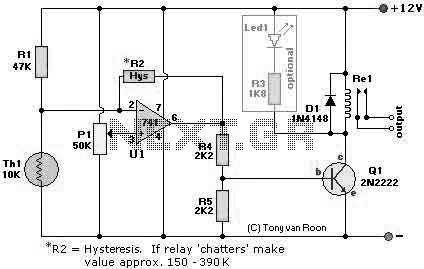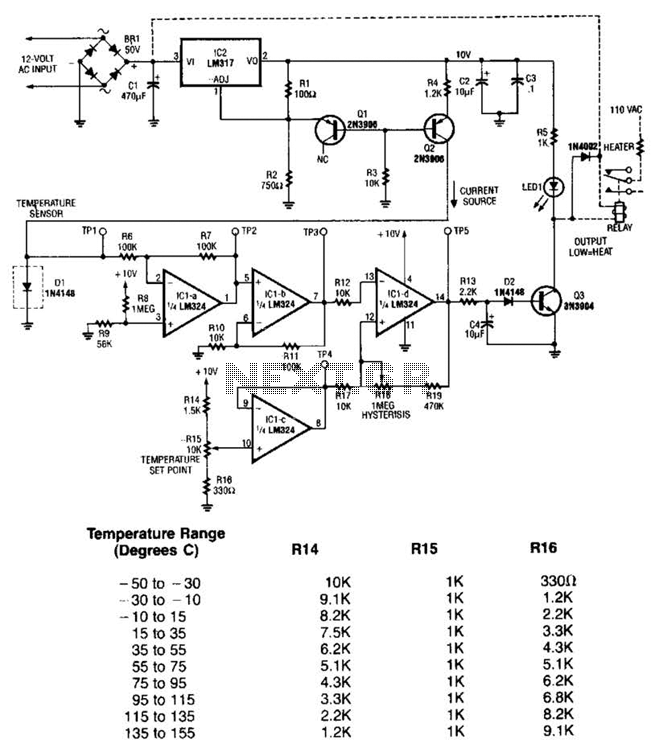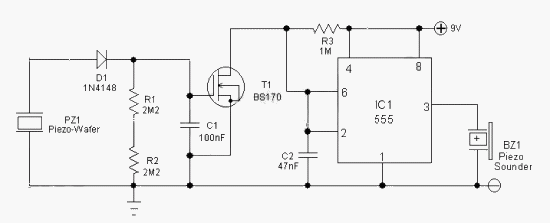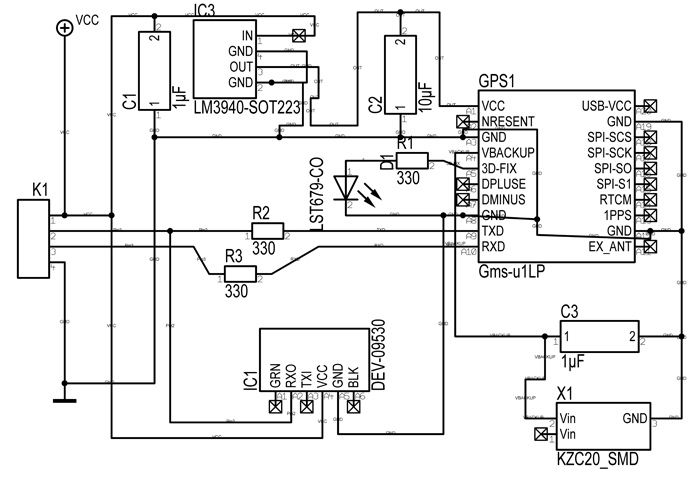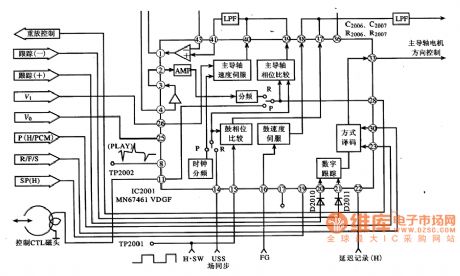
Dew sensor
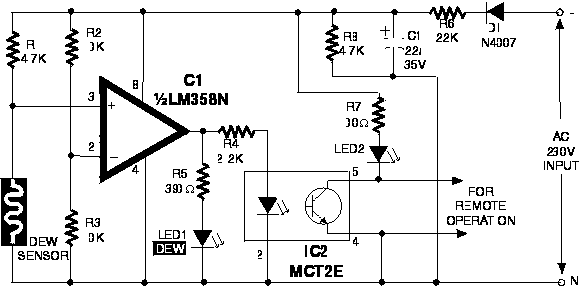
Dew sensor. Dew (condensed moisture) adversely affects the normal performance of sensitive electronic devices. A low-cost circuit described here can be used to.
The dew sensor circuit is designed to detect the presence of condensed moisture, which can significantly impair the functionality of sensitive electronic devices. The circuit employs a moisture-sensitive component, such as a hygrometer or a capacitive moisture sensor, to monitor humidity levels in the environment. When the humidity exceeds a predefined threshold, indicating the formation of dew, the sensor activates a response mechanism to protect the electronic devices.
The basic configuration of the dew sensor circuit includes a power supply, the moisture-sensitive element, a comparator, and an output stage. The power supply typically operates at standard voltages, such as 5V or 12V, depending on the specific components used. The moisture sensor generates a varying output signal based on the humidity level; this signal is fed into a comparator circuit that compares it against a reference voltage set to correspond with the dew point.
When the humidity level rises above the reference voltage, the comparator output changes state, triggering an alert or protective action. This action could include activating a relay to disconnect power from the sensitive devices, turning on a warning light, or sending a signal to a microcontroller for further processing.
To enhance the reliability of the dew sensor, additional components such as hysteresis can be incorporated into the comparator circuit to prevent rapid switching due to small fluctuations in humidity. Furthermore, the circuit may include a delay mechanism to ensure that brief spikes in humidity do not trigger unnecessary responses.
Overall, this low-cost dew sensor circuit provides an effective solution for monitoring humidity levels and protecting sensitive electronic devices from the detrimental effects of dew condensation.Dew sensor. Dew (condensed moisture) ad- versely affects the normal per- formance of sensitive electronic devices. A low-cost circuit described here can be used to. 🔗 External reference
The dew sensor circuit is designed to detect the presence of condensed moisture, which can significantly impair the functionality of sensitive electronic devices. The circuit employs a moisture-sensitive component, such as a hygrometer or a capacitive moisture sensor, to monitor humidity levels in the environment. When the humidity exceeds a predefined threshold, indicating the formation of dew, the sensor activates a response mechanism to protect the electronic devices.
The basic configuration of the dew sensor circuit includes a power supply, the moisture-sensitive element, a comparator, and an output stage. The power supply typically operates at standard voltages, such as 5V or 12V, depending on the specific components used. The moisture sensor generates a varying output signal based on the humidity level; this signal is fed into a comparator circuit that compares it against a reference voltage set to correspond with the dew point.
When the humidity level rises above the reference voltage, the comparator output changes state, triggering an alert or protective action. This action could include activating a relay to disconnect power from the sensitive devices, turning on a warning light, or sending a signal to a microcontroller for further processing.
To enhance the reliability of the dew sensor, additional components such as hysteresis can be incorporated into the comparator circuit to prevent rapid switching due to small fluctuations in humidity. Furthermore, the circuit may include a delay mechanism to ensure that brief spikes in humidity do not trigger unnecessary responses.
Overall, this low-cost dew sensor circuit provides an effective solution for monitoring humidity levels and protecting sensitive electronic devices from the detrimental effects of dew condensation.Dew sensor. Dew (condensed moisture) ad- versely affects the normal per- formance of sensitive electronic devices. A low-cost circuit described here can be used to. 🔗 External reference
